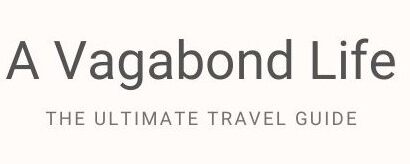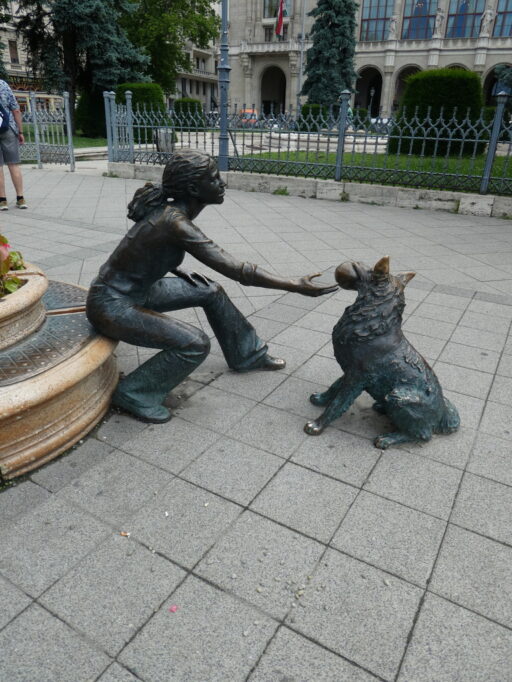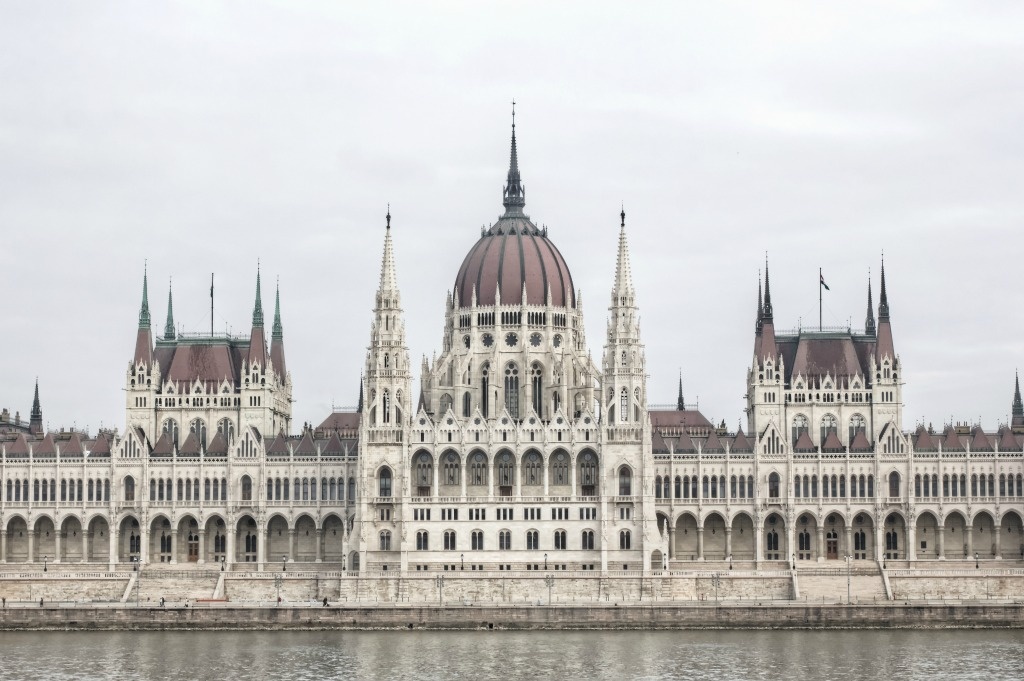HUNGARY
TRAVEL GUIDE
Discover the charm and beauty of Hungary, a captivating destination where history meets modernity. From the stunning architecture of Budapest’s Parliament Building and the serene waters of Lake Balaton to the traditional flavors of Hungarian cuisine, this travel guide unveils the country’s hidden gems and must-see attractions. Explore vibrant cities, picturesque countryside, and cultural treasures that will make you
Hungary Itineraries
Need to Know
Why Travel to Hungary
Tip: Hungary offers historic cities, thermal baths, and vibrant culture.
Why: From Budapest’s grand architecture to Lake Balaton’s scenic shores, Hungary blends Austro-Hungarian heritage with unique traditions and natural beauty.
How: Explore castles and museums (HUF 1000–4000, $3–10), enjoy local cuisine (HUF 800–2500, $2–7), and book tours via Viator (HUF 4000–12000, $10–30) for guided experiences.
Do I Need a Visa
Tip: EU, US, and many nationalities get 90-day visa-free entry (Schengen). Others may need a visa (HUF 24000–32000, $60–80). Check requirements in advance.
Why: Ensures smooth entry and compliance with Schengen immigration rules.
How: Check via Hungarian embassy websites ($0). Carry digital passport copies on Google Drive ($0). Have proof of accommodation ready.
What is the Currency of Hungary
Tip: The currency is Hungarian Forint (HUF). Budget travelers spend HUF 10000–20000/day ($25–50).
Why: Forints are used for most transactions; cards are accepted in cities but cash is key in rural areas.
How: Exchange at banks ($0) or use ATMs (HUF 400–1000 fee, $1–3). Carry small Forint notes (HUF 500–2000). Use Revolut ($0 fees) for better rates.
Is Hungary Cheap to Visit
Tip: Hungary is affordable, with meals (HUF 800–2500, $2–7), hostels (HUF 4000–12000/night, $10–30), and transport (HUF 350–2000, $1–5) at low costs.
Why: Budget-friendly options suit backpackers and cultural explorers.
How: Stay in hostels (HUF 4000–12000). Eat at local étkezdék (HUF 800–1500). Book via Booking.com ($0) for deals.
Can I Drink the Tap Water
Tip: Tap water is safe in Budapest and major cities but use bottled water in rural areas (HUF 200–400, $0.50–1).
Why: Rural water quality varies, and bottled water avoids health risks.
How: Buy bottled water from shops (HUF 200–400). Use reusable bottles with filters ($10–20) in rural areas. Check seals on bottles.
Can I Buy a SIM Card
Tip: Purchase a local SIM card for data and calls (HUF 2000–6000, $5–15).
Why: Affordable data plans ensure connectivity for navigation and communication.
How: Buy SIMs at airports or shops (HUF 2000–6000). Top up via mobile apps ($0). Choose providers like Telekom or Vodafone.
Enchanting Hungary Travel Guide: Your Gateway to Unforgettable Adventures
Welcome to the Enchanting Hungary Travel Guide, your essential companion for exploring a Central European gem. Hungary captivates with its historic architecture, thermal baths, and vibrant cultural scene, from Budapest’s Danube views to Lake Balaton’s serene shores. This guide covers eight top destinations, cultural experiences, and practical tips to ensure a seamless and unforgettable journey. Whether you’re soaking in Széchenyi Baths or exploring Eger’s wine region, let this guide inspire your Hungarian adventure.
How to Get to Hungary
Travel Options
Tip: Fly into Budapest (BUD) ($500–1200 from North America, $50–200 from Europe). Trains connect from Austria or Slovakia ($15–40).
Why: Budapest is the main gateway with excellent regional connections to Central Europe.
How: Compare flights on Skyscanner ($0). Take trains from Vienna ($15–40) or Bratislava ($10–25). Use buses (HUF 1000–4000, $3–10) or trains within Hungary.
Best Time to Visit Hungary
Optimal Seasons
Tip: Visit in spring (April–June) or autumn (September–October) for mild weather (15–25°C). Summer (July–August) is warm (25–30°C), ideal for Lake Balaton. Winter (December–February) suits thermal baths (0–10°C).
Why: Spring and autumn offer pleasant weather and fewer crowds; summer is best for lakeside activities.
How: Book accommodations early for summer (HUF 6000–20000/night, $15–50). Pack versatile clothing and swimsuits. Check forecasts via Idokep.hu ($0).
Top Destinations in Hungary
Budapest
Tip: Visit Buda Castle (HUF 2000–4000, $5–10), relax at Széchenyi Baths (HUF 6000–10000, $15–25), and stroll the Chain Bridge ($0). Take a Danube cruise (HUF 4000–8000, $10–20) or try goulash (HUF 800–2000, $2–5).
Why: Budapest, Hungary’s vibrant capital, blends grand Austro-Hungarian architecture with lively ruin bars. Buda Castle offers panoramic views, while Széchenyi Baths provide a unique thermal experience, and the Danube River defines the city’s charm.
How: Use Budapest’s metro or trams (HUF 350–450, $1–1.20). Book bath tickets online ($0 fees) or tours via Viator (HUF 4000–12000, $10–30). Wear comfortable shoes for hilly Buda and visit in spring for blooming parks.
Debrecen
Tip: Visit the Great Reformed Church (HUF 500–1000, $1–3), explore Déri Museum (HUF 2000, $5), and stroll Nagyerdő Park ($0). Try Hortobágy pancakes (HUF 800–1500, $2–4) or join a city tour (HUF 4000–8000, $10–20).
Why: Debrecen, Hungary’s cultural hub, boasts the iconic Great Reformed Church and vibrant student life. The Déri Museum showcases art and history, while Nagyerdő Park offers serene green spaces, reflecting the Great Plain’s relaxed charm.
How: Take trains from Budapest (HUF 3000–6000, $8–15, 2.5 hours). Stay in guesthouses (HUF 4000–12000, $10–30/night). Book tours via GetYourGuide (HUF 4000–8000, $10–20), try lángos at markets (HUF 500–1000, $1–3), and visit in August for the Flower Carnival.
Szeged
Tip: Visit Dóm Square ($0), explore the Votive Church (HUF 500–1000, $1–3), and stroll the Tisza River ($0). Try fish soup (HUF 800–1500, $2–4) or join a paprika tour (HUF 4000–8000, $10–20).
Why: Szeged, known as the “City of Sunshine,” features the grand Votive Church and vibrant Dóm Square. Its riverside charm and paprika heritage, tied to Hungary’s culinary tradition, make it a cultural gem in the south.
How: Take trains from Budapest (HUF 3000–5000, $8–12, 2 hours). Stay in hotels (HUF 6000–15000, $15–40/night). Book tours via Klook (HUF 4000–8000, $10–20), wear sunscreen for river walks, and visit in summer for open-air festivals.
Pécs
Tip: Visit the Pécs Cathedral (HUF 1000–2000, $3–5), explore the Zsolnay Museum (HUF 1500, $4), and stroll Széchenyi Square ($0). Try pörkölt (HUF 800–1500, $2–4) or join a cultural tour (HUF 4000–8000, $10–20).
Why: Pécs, a UNESCO-listed city, boasts a rich history with Roman, Ottoman, and Hungarian influences. The cathedral and Zsolnay Museum highlight its architectural and ceramic heritage, while Széchenyi Square buzzes with Mediterranean flair.
How: Take trains from Budapest (HUF 3000–6000, $8–15, 3 hours). Stay in guesthouses (HUF 4000–12000, $10–30/night). Book tours via Viator (HUF 4000–8000, $10–20), wear comfortable shoes for hilly streets, and visit in spring for cultural events.
Eger
Tip: Visit Eger Castle (HUF 2000, $5), explore the Valley of the Beautiful Women ($0), and see the Minaret (HUF 300, $1). Try Egri Bikavér wine (HUF 500–1000, $1–3) or join a wine tour (HUF 4000–8000, $10–20).
Why: Eger, a historic town, is famous for its medieval castle and vibrant wine culture. The Valley of the Beautiful Women offers charming wine cellars, while the Ottoman-era Minaret adds a unique historical layer to this northern gem.
How: Take buses from Budapest (HUF 2000–4000, $5–10, 2 hours). Stay in guesthouses (HUF 4000–12000, $10–30/night). Book wine tours via GetYourGuide (HUF 4000–8000, $10–20), bring a light jacket for cellars, and visit in autumn for harvest season.
Lake Balaton
Tip: Relax at Siófok Beach ($0), visit Tihany Abbey (HUF 1000–2000, $3–5), and explore Balatonfüred ($0). Try lángos (HUF 500–1000, $1–3) or take a boat tour (HUF 2000–4000, $5–10).
Why: Lake Balaton, Hungary’s “sea,” is a summer haven with sandy beaches and charming towns. Tihany’s lavender fields and abbey offer scenic beauty, while Balatonfüred’s promenade blends relaxation with vibrant lakeside culture.
How: Take trains from Budapest (HUF 2000–4000, $5–10, 2 hours). Stay in guesthouses (HUF 4000–12000, $10–30/night). Book tours via Klook (HUF 4000–8000, $10–20), pack sunscreen for beach days, and visit in summer for water activities.
Szentendre
Tip: Stroll the cobblestone streets ($0), visit the Marzipan Museum (HUF 500, $1), and explore the Art Mill (HUF 1000, $3). Try kürtőskalács (HUF 500–1000, $1–3) or take a Danube boat tour (HUF 2000–4000, $5–10).
Why: Szentendre, a picturesque town near Budapest, is an artist’s haven with colorful Baroque streets and galleries. The Marzipan Museum and Art Mill showcase its creative spirit, while the Danube adds a serene backdrop.
How: Take trains from Budapest (HUF 500–1000, $1–3, 40 minutes). Stay in guesthouses (HUF 4000–12000, $10–30/night). Book tours via Viator (HUF 4000–8000, $10–20), wear comfortable shoes for cobblestones, and visit in summer for open-air galleries.
Sopron
Tip: Visit the Fire Tower (HUF 1000, $3), explore the Old Town ($0), and take a wine tour in Fertő Region (HUF 4000–8000, $10–20). Try nokedli (HUF 800–1500, $2–4) or hike in Sopron Hills ($0).
Why: Sopron, near the Austrian border, blends medieval charm with wine culture. The Fire Tower offers panoramic views, while the UNESCO-listed Fertő Region and historic Old Town reflect Hungary’s Austro-Hungarian heritage.
How: Take trains from Budapest (HUF 3000–6000, $8–15, 2.5 hours). Stay in hotels (HUF 6000–15000, $15–40/night). Book tours via GetYourGuide (HUF 4000–8000, $10–20), bring hiking boots for hills, and visit in autumn for wine festivals.
Cultural Experiences and Tips
Hungarian Cuisine
Tip: Try goulash (HUF 800–2000, $2–5), lángos (HUF 500–1000, $1–3), or kürtőskalács (HUF 500–1000, $1–3) at local étkezdék. Sip Tokaji wine (HUF 500–1000, $1–3).
Why: Hungary’s hearty cuisine blends Central European and Magyar flavors with rich stews and pastries.
How: Dine at Budapest’s Great Market Hall or Eger’s wine cellars. Book cooking classes via Viator (HUF 6000–12000, $15–30). Pair with local pálinka (HUF 500–1000, $1–3).
Cultural Festivals and Crafts
Tip: Attend the Sziget Festival in Budapest (August, HUF 20000–40000, $50–100) or visit embroidery workshops in Pécs (HUF 2000–4000, $5–10).
Why: Festivals and crafts showcase Hungary’s vibrant Magyar and folk traditions.
How: Check schedules on HungaryTourism.hu ($0). Book cultural tours via GetYourGuide (HUF 4000–8000, $10–20). Bargain respectfully at markets.
Music and Dance
Tip: Enjoy csárdás dance at festivals (HUF 0–2000, $0–5) or folk music in Budapest (HUF 2000–6000, $5–15).
Why: Hungary’s music and dance reflect its lively Magyar heritage.
How: Book tickets via Jegymester.hu ($0). Visit venues like Budapest’s Folk Music House. Dress casually for folk events.
Practical Tips for Traveling in Hungary
Visa and Documentation
Tip: Ensure your passport is valid for 6 months. Many nationalities get 90-day visa-free entry (Schengen); others need a visa (HUF 24000–32000, $60–80).
Why: Simplifies entry and ensures compliance with Schengen rules.
How: Check via Hungarian embassy websites ($0). Carry digital copies on Google Drive ($0). Have proof of accommodation ready.
Currency and Payments
Tip: Use Hungarian Forint (HUF 10000–20000/day, $25–50). Cards are accepted in cities; cash is needed for rural areas and markets.
Why: Small vendors and rural areas often require cash payments.
How: Use ATMs in Budapest (HUF 400–1000 fee, $1–3). Carry small Forint notes (HUF 500–2000). Use Revolut ($0 fees) for better rates.
Language and Communication
Tip: Learn phrases like “szia” (hello) or “köszönöm” (thank you). English is common in tourist areas but limited elsewhere.
Why: Basic Hungarian enhances interactions and shows respect.
How: Use Google Translate ($0) for offline use. Purchase a local SIM card (HUF 2000–6000, $5–15) for data.
Safety and Dangers in Hungary
Tip: Hungary is safe, but beware of pickpocketing in Budapest’s markets or Sziget Festival. Be cautious on rural hiking trails.
Why: Low crime rates, but tourist areas and trails require vigilance.
How: Use a money belt ($10–20). Check travel advisories (US State Department, $0). Drink bottled water in rural areas (HUF 200–400, $0.50–1).
More Safety Tips for EuropeAccommodation Options
Tip: Choose hotels in Budapest (HUF 6000–20000, $15–50/night), hostels in Debrecen (HUF 4000–12000, $10–30/night), or guesthouses at Lake Balaton (HUF 4000–12000, $10–30/night).
Why: Diverse options suit budgets, from urban hotels to lakeside guesthouses.
How: Book via Booking.com or Airbnb ($0). Opt for central or scenic locations. Check reviews for authenticity.
Transportation
Tip: Use trains (HUF 1000–6000, $3–15), buses (HUF 500–2000, $1–5), or rent cars (HUF 8000–16000/day, $20–40). Walking is viable in city centers.
Why: Affordable transport options suit both urban and rural exploration.
How: Book trains via MÁV ($0). Use Volánbusz for buses ($0) or rent cars via Rentalcars.com ($0). Carry small cash for fares.
Why This Hungary Travel Guide is Essential
Your Gateway to Unforgettable Adventures
Tip: Use this guide to explore Hungary’s cultural treasures, stay safe, and immerse in local traditions.
Why: Hungary’s blend of history, thermal baths, and cuisine requires informed planning.
How: Follow tips for Budapest, Lake Balaton, and more. Enjoy goulash (HUF 800–2000, $2–5) and csárdás performances (HUF 0–2000, $0–5). Use apps like MÁV ($0) for seamless travel.



